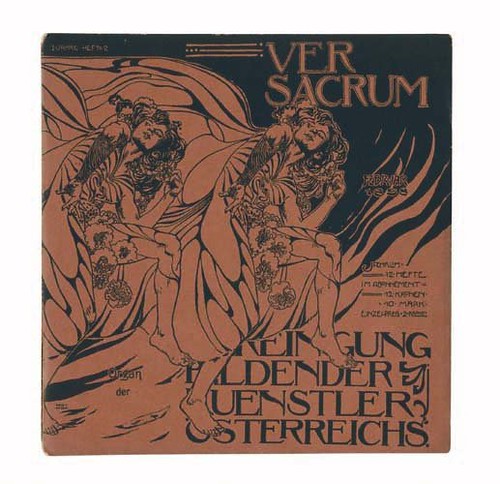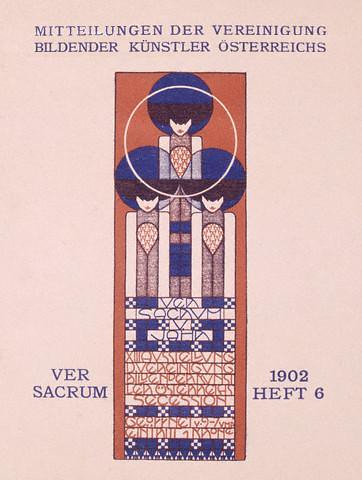Ver Sacrum (meaning Sacred Spring) was the official magazine of the Vienna Secession. Published from 1898 to 1903, it featured drawings and designs in the Jugendstil style along with literary contributions from distinguished writers from across Europe.

Image source: https://search.creativecommons.org/photos/081ff1f4-5f3c-4f0b-9221-32cf0d1e21fc by Susanlenox
The magazine offers a wealth of information supplemented by many illustrations and book ornamentations and is devoted to the communication and dissemination of modern art.
Apart from illustrations and book ornamentation the magazine also contains literary items, art criticism, and information and articles about art history.
Ver Sacrum‘s uniqueness stems from its unusual square format and its “Gesamtkunstwerk” (a total work of art) approach to harmonizing image, typeface, and ornament.

Image source: https://search.creativecommons.org/photos/2135edee-8e01-4312-95a0-2c24741d9a51 by Bibliothèques de Nancy- Patrimoine
Which artists have been published?
The magazine included contributions by artists as well as prominent writers such as:
- Rainer Maria Rilke,
- Hugo von Hofmannsthal,
- Maurice Maeterlinck,
- Knut Hamsun,
- Otto Julius Bierbaum,
- Richard Dehmel,
- Ricarda Huch,
- Conrad Ferdinand Meyer,
- Josef Maria Auchentaller
- Arno Holz.
Each issue featured the work of a particular artist, the Koloman Moser issue of 1899 is the most sought after by collectors.

Image source: https://search.creativecommons.org/photos/41bdfb30-78ed-413b-ae5e-2524bcd61766 by dalbera

Image source: https://search.creativecommons.org/photos/4b2982a3-496b-42f6-97f5-924034d1582c by Susanlenox
The first issue published in January 1898 came out before the first Secession exhibition, which took place in March of that year. It included many “proclamations” by Secession members and featured a cover design by Alfred Roller, the editor-in-chief. Roller‘s design featured three blank coats of arms representing architecture, painting, and sculpture superimposed over a flowering tree, the roots of which are breaking free from its wooden barrel, perhaps intended to represent the Secession movement’s breaking out of the conventional Viennese art world. Moser, Hoffmann, and Olbrich also contributed designs to the first edition.

Image source: https://search.creativecommons.org/photos/d4621798-7a22-4863-b6cc-39a76fc1a990 by Susanlenox
The closure of Ver Sacrum was not the end of the Secession movement but led to another, greater, and more influential development the Wiener Werkstätte, founded in May 1903. Again Moser and Hoffmann were the driving forces in what became a total lifestyle applied arts industry, taking forward and developing many of the ideas first floated in Ver Sacrum and making them accessible to the growing central European middle classes.
Info sources:
For more references, please also visit: www.jbdesign.it/idesignpro
